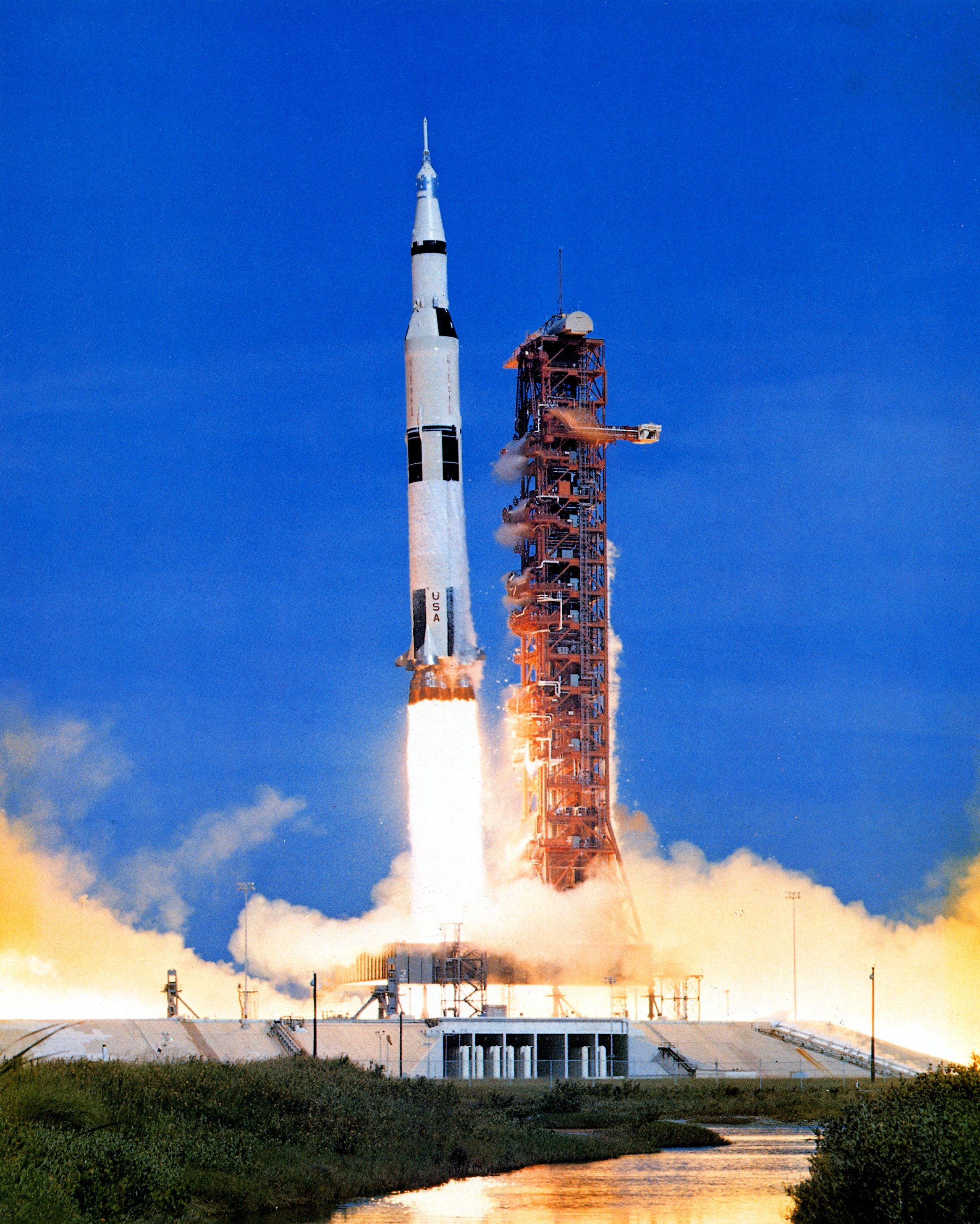
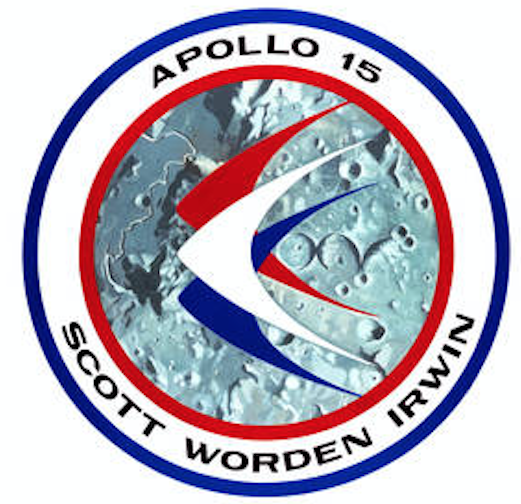 26 July 1971: At 9:34:00.6 a.m., Eastern Daylight Time (13:34:00.6 UTC), the Apollo 15/Saturn V (AS-510) lifted off from Launch Complex 39A, Kennedy Space Center, Cape Canaveral, Florida. The three-man flight crew were Colonel David Randolph Scott, United States Air Force, Mission Commander, on his third space flight; Major Alfred Merrill Worden, USAF, Command Module Pilot, on his first mission; and Lieutenant Colonel James Benson Irwin, USAF, Lunar Module Pilot, also on his first space mission.
26 July 1971: At 9:34:00.6 a.m., Eastern Daylight Time (13:34:00.6 UTC), the Apollo 15/Saturn V (AS-510) lifted off from Launch Complex 39A, Kennedy Space Center, Cape Canaveral, Florida. The three-man flight crew were Colonel David Randolph Scott, United States Air Force, Mission Commander, on his third space flight; Major Alfred Merrill Worden, USAF, Command Module Pilot, on his first mission; and Lieutenant Colonel James Benson Irwin, USAF, Lunar Module Pilot, also on his first space mission.
Their destination was was Hadley Rille, Mare Imbrium, The Moon.
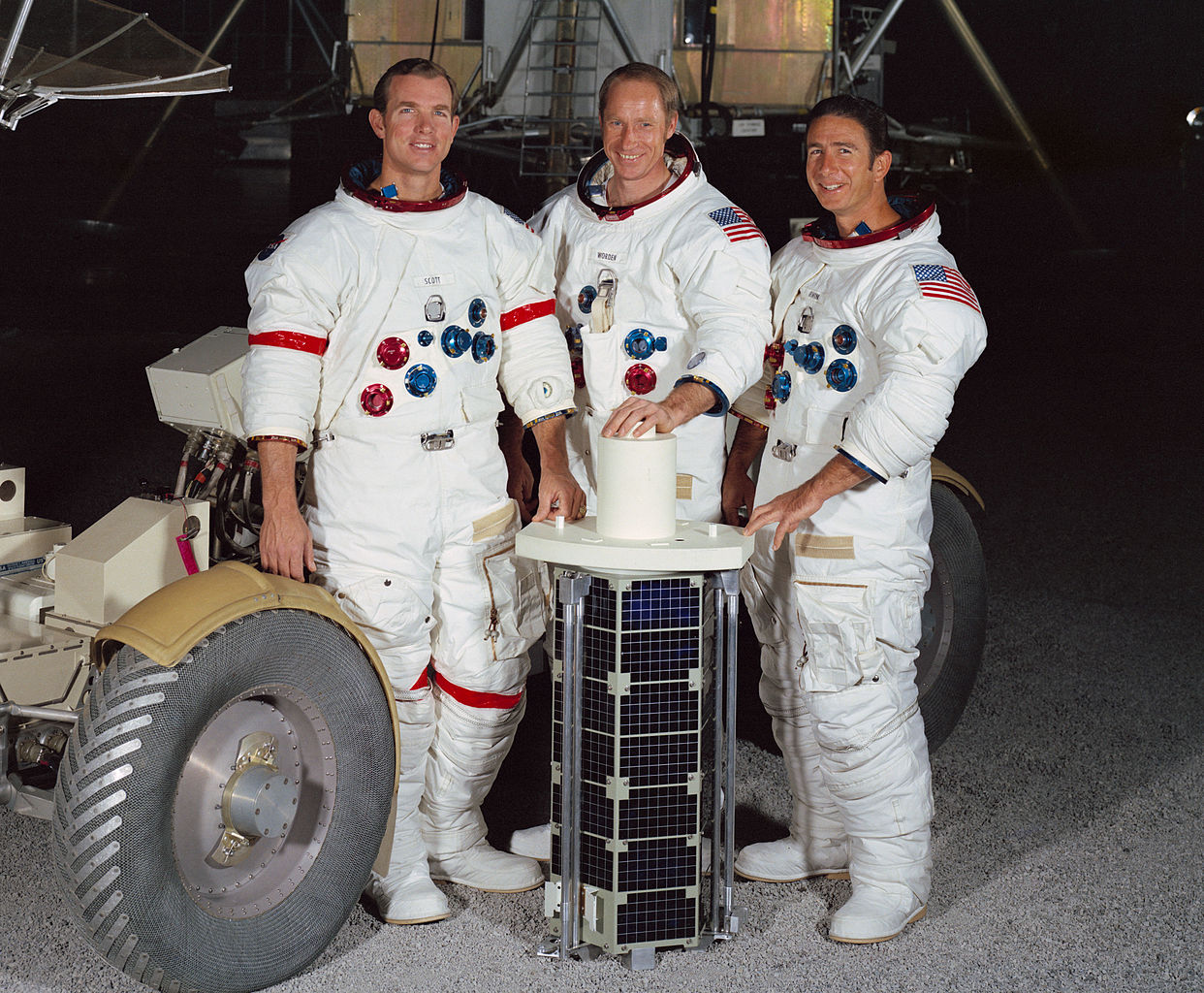
At first stage ignition, the Apollo 15/Saturn V launch vehicle (AS-510) had a total weight of 6,494,415 pounds (2,945,817 kilograms). The five Rocketdyne F-1 engines of the S-IC first stage produced 7,558,000 pounds of thrust (33,619.66 kilonewtons).
After the first stage engines shut down, the S-IC stage was jettisoned. The five Rocketdyne J-2 engines of the S-II second stage received the Engine Start Command at T + 161.95 seconds. They produced 1,169,662 pounds of thrust (5,202.92 kilonewtons), and were themselves shut down at T + 549.06 seconds. The second stage was jettisoned and the single J-2 of the S-IVB third stage started at T + 553.2 and shut down at T + 694.7 seconds. The S-IVB engine produced 202,965 pounds of thrust (902.83 kilonewtons) during its First Burn.
Apollo 15 entered a parking orbit 11 minutes, 44 seconds after launch. The nearly-circular 105.3 × 106.4 miles (169.5 × 171.3 kilometers) orbit had a period of 1 hour, 27.84 minutes.
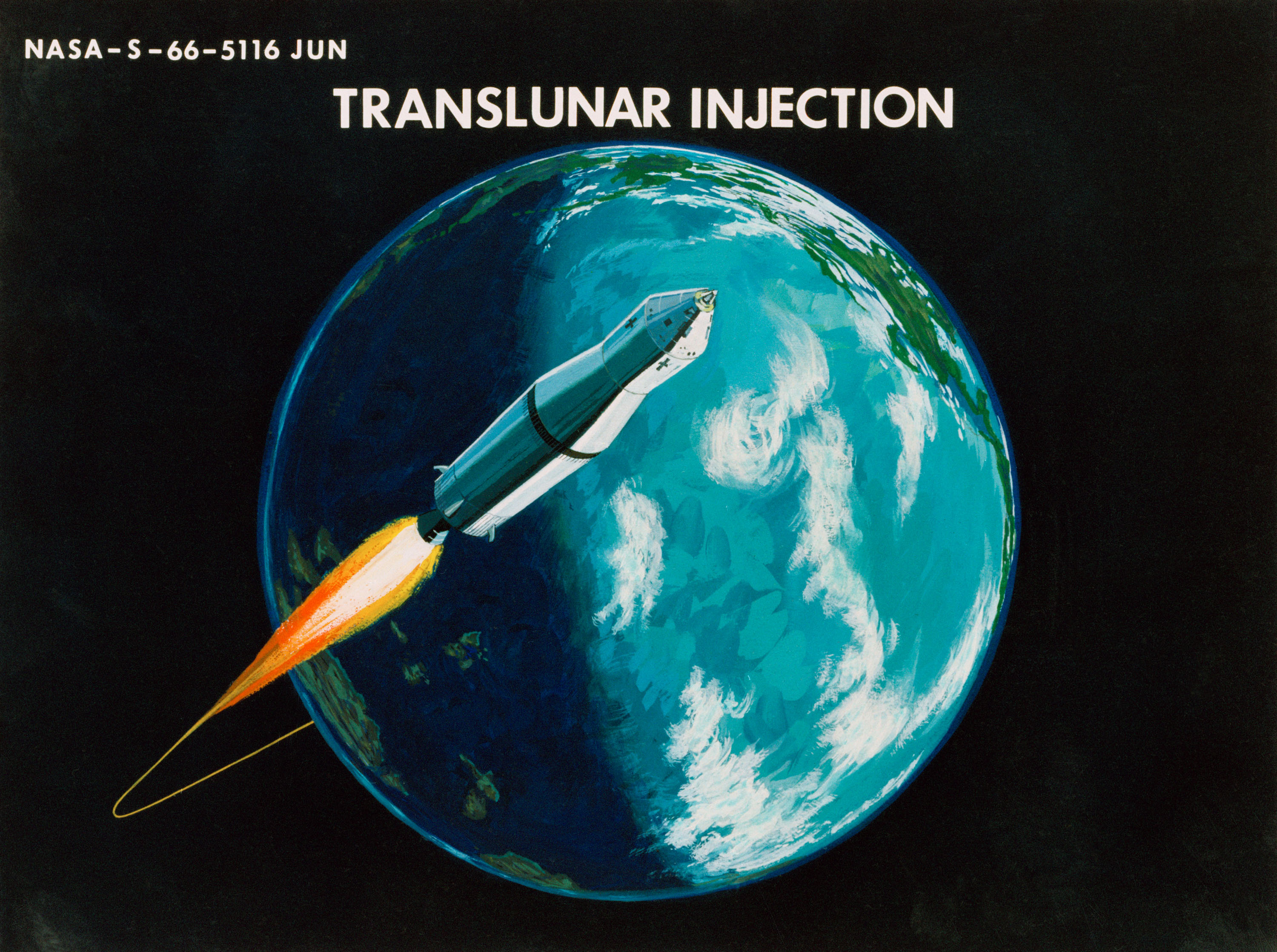
The Trans Lunar Injection maneuver (TLI) began at mission elapsed time 02:50:03. The total vehicle mass at the S-IVB’s Second Burn ignition was 307,661 pounds (139,552 kilograms). The J-2 engine produced 203,111 pounds of thrust (903.48 kilonewtons. The engine shut down at T + 02:55:53.7.
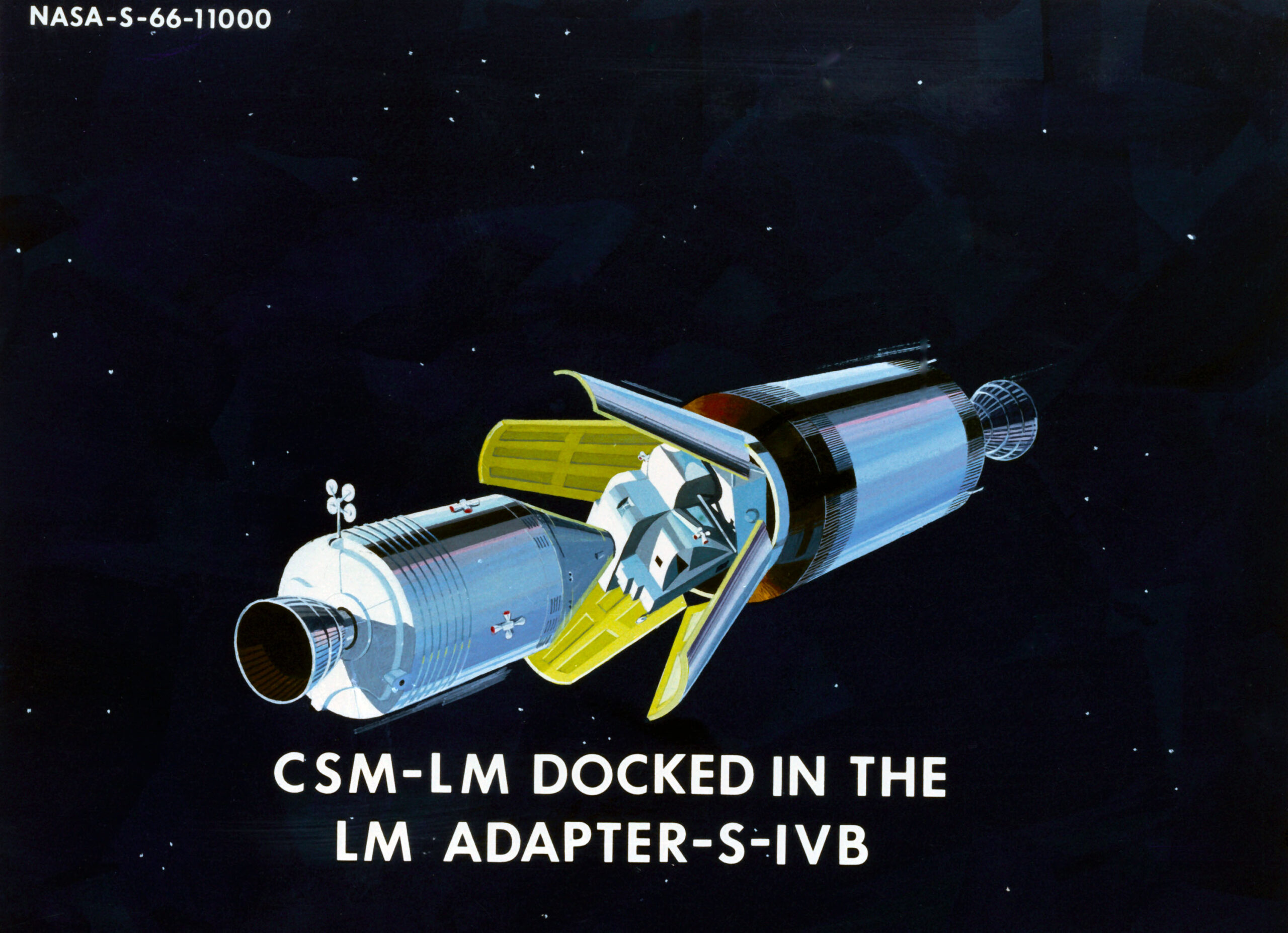
Once on the way to The Moon, the Command and Service Module Endeavour separated from the S-IVB third stage, reversed its relative position and then extracted the Lunar Module Falcon from the stage adaptor fairing. The S-IVB third stage was then released, continuing its own journey. It impacted the lunar surface at mission elapsed time 79:24:41.55, traveling 5,764 miles per hour (9,277 kilometers per hour).
This was the fifth manned lunar landing mission (though Apollo 13 did not land).
On this flight, NASA was sending a powered wheeled transport vehicle, the Lunar Roving Vehicle, or LRV. This would allow the astronauts on the moon’s surface to travel farther from the landing point, spend less time getting where they were going, and with less physical exertion. They would also be able to return to their space craft with more geologic samples. The emphasis on this flight was to conduct a meaningful scientific examination of the surface. The astronauts had received extensive training in this regard.
© 2018, Bryan R. Swopes